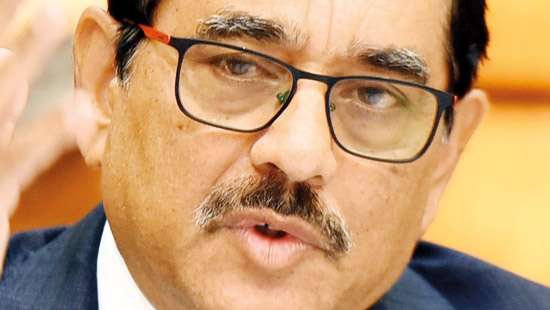Reply To:
Name - Reply Comment

By Indika Sakalasooriya
Although Sri Lanka’s access to international capital markets is expected to be restored “quite soon,” Central Bank Governor Dr. Nandalal Weerasinghe said there is no need for the government to explore that option.
|
Dr. Nandalal Weerasinghe |
“If you overperform compared to the baseline scenarios of the IMF, and with the successful completion of the debt restructuring, there will be an upgrade in the sovereign rating. That will open up the markets,” Dr. Weerasinghe told a virtual investor forum organised by CAL, yesterday.
“Even though access to capital markets will be opened, I don’t see a need for the government to go and raise as much as we raised last several years, because if the government is going for a reasonable budget deficit, I don’t see why the government should consider raising commercial financing,” he added.He also pointed out that once the debt restructuring is completed, the government will have access to funding from multilateral lending agencies and bi-lateral project loans, particularly from countries like Japan.
According to the International Monetary Fund (IMF) projections, Sri Lanka is unlikely to need market access until 2027.
“If we outperform the IMF targets, we could have early access even before 2027. But the question is whether we need to go to the markets and raise. It is up to the government, depending on their finances,” he said.
Dr. Weerasinghe expressed confidence that the government could fulfil its financing needs without opting for commercial borrowings, through revenue mobilisation and lower level of debt servicing following the completion of the debt restructuring.
Before Sri Lanka suspended its foreign debt repayments in April, 2022, it was projected that the country would have to repay US$ 6 billion a year to its creditors until 2029.
However, post-debt restructuring, as per the IMF-programme, Sri Lanka’s debt service payments will be a maximum of 4.5 percent of the Gross Domestic Product.
The current debt service payments, as a percentage of GDP, stands at 9.4 percent.
“So, that means, we will be obligated to settle only around half of the original repayment amount. If Sri Lanka’s initial annual loan payment stood at US$ 6 billion, post-debt restructuring, this sum will be significantly reduced to approximately US$ 3 billion,” Dr. Weerasinghe told the last monetary policy presser held on August 23.
“If the economy is going to grow faster, then there might be a need for commercial financing,” he told yesterday’s virtual meeting.
“But, I’m hoping that the government may not need to raise significant amount of commercial financing going forward, which will help maintain external debt sustainability,” he remarked.